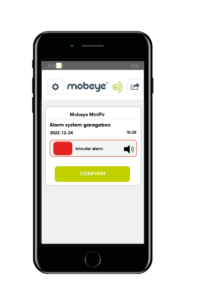MOBEYE PROGRAMMING: What if my SMS command is rejected by the device?

Most of the Mobeye devices can be programmed using straightforward SMS commands. These commands adhere to a simple yet strict format. However, even if the format has been correctly input and sent, the Mobeye device may still disregard the SMS command. This issue is most likely related to the SMS settings on your mobile phone. To determine the reason for the rejection of your SMS command, please consider the following:
- Make sure that the Mobeye device is able to receive commands.
The GSM module needs to be open and connected to the network. You can refer to the manual for instructions on how to do this. If needed, you can download the manual from our support page.
- Make sure you format the SMS command properly.
Most commands have the following structure: CODE SETTING:OPTION
In the factory defaults the CODE is 1111.
Next type a space.
The option (such as DELAY1) can be written in capital letters or in lowercase.
Next type a colon (:)
Immediately after write the option for the setting (e.g. 99 as delay time) - If the correct SMS command was sent, but the unit disapproves the command (by red LEDs or a low sound), please check if the SMS settings in your telephone are set to “GSM alphabet” instead of “Unicode”.
Check this in the following way:
Go to the SMS messaging app.
Open the settings for the SMS input mode.
You can choose between “GSM alphabet”* or “Unicode” (or other). Choose GSM alphabet.
* SMS texts can be encoded using several alphabets. The most common 7-bit alphabet is often referred to as GSM alphabet and contains all latin characters, digits and several special characters. An SMS sent using the GSM alphabet can contain up to 160 characters.

 Finding the ideal product to meet your project needs can be challenging. Our products are organised by application to simplify your decision-making process. Choose the application area that fits your needs to see a list of related products.
Finding the ideal product to meet your project needs can be challenging. Our products are organised by application to simplify your decision-making process. Choose the application area that fits your needs to see a list of related products.